Are you struggling to keep your customers loyal? Say hello to Loyalty Program Marketing! It’s not just about points and discounts anymore—it’s about creating meaningful connections to keep people coming back. With strategies like personalization, tiered rewards, and exclusive perks, you can create programs that strengthen customer relationships and drive repeat business.
In this guide, we’ll explore everything from smart loyalty program marketing strategies to real-life examples of brands doing it right. So, let’s turn your customers into your biggest fans!
What is Loyalty Program Marketing?
Loyalty program marketing is a strategic approach focusing on retaining existing customers and boosting revenue by offering personalized rewards, discounts, or exclusive perks. Unlike general marketing tactics, it emphasizes creating long-term relationships, encouraging repeat purchases, and enhancing customer loyalty.
Key Elements of Loyalty Program Marketing:
- Rewards System: Customers earn points, discounts, or other benefits based on purchases or brand engagement.
- Personalization: Tailoring rewards and offers based on customer preferences and behaviors to enhance the experience.
- Tiered Benefits: Implementing levels of rewards (e.g., Silver, Gold, Platinum) to encourage more engagement and spending.
- Referral Incentives: Rewarding customers for introducing new members to the brand.
- Engagement Opportunities: Incorporating activities like surveys, reviews, or social media engagement to earn additional rewards.
Why Loyalty Program Marketing Matters
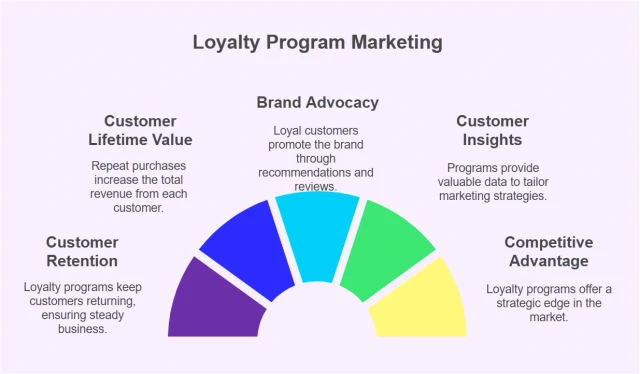
Loyalty program marketing benefits help boost revenue to build strong customer relationships
Loyalty program marketing isn’t just about keeping customers—it’s about unlocking a world of benefits for your brand. Here is why:
- Increased Customer Retention: Acquiring a new customer can be 5 to 25 times more expensive than retaining an existing one (Harvard Business Review). Loyalty program marketing isn’t just about keeping customers—it’s about unlocking a world of benefits for your brand. 77% of consumers say they’ve remained loyal to a specific brand for 10 years or more, often due to loyalty programs.
- Boosted Customer Lifetime Value (CLTV): The longer your customers stay, the more they spend. A well-designed loyalty marketing program encourages customers repeat purchases, significantly increasing each customer’s total revenue over their lifetime.
- Enhanced Brand Advocacy: Loyal customers don’t just buy—they talk! They’ll recommend your brand to their friends, share positive reviews, and even defend your business online. Loyalty programs turn customers into passionate brand advocates.
- Improved Customer Insights: 57% of businesses use their loyalty programs to gain customer insights and data. This data allows for personalized marketing, targeted offers, and a better understanding of customer needs and preferences.
- Stronger Customer Relationships: Customers with an emotional relationship with a brand have a 306% higher lifetime value. Loyalty programs foster emotional connections by recognizing and rewarding customer loyalty, leading to long-term relationships.
- Alignment with Customer Expectations: 88% of consumers say building brand loyalty takes three or more purchases. Loyalty programs meet customer expectations by recognizing and rewarding their continued patronage, fostering a sense of value and appreciation.
Top 8 Marketing Strategies to Increase Customer Loyalty
To build stronger emotional bonds with your customers, implementing effective loyalty program marketing strategies is essential.
Strategy #1: Personalization
Importance of Personalized Offers & Messages
Personalization is key to engaging customers. By analyzing data like purchase history and browsing habits, businesses can create tailored promotions, discounts, and recommendations. This approach makes customers feel appreciated and more likely to buy.
According to Epsilon, 80% of consumers prefer personalized shopping experiences, which shows the importance of these experiences in building strong customer relationships.
Examples of Personalization
- Product recommendations: Platforms like Amazon suggest items based on past purchases, enhancing customer satisfaction and loyalty.
- Targeted email campaigns: Brands, like Sephora’s Beauty Insider, send personalized emails with suggestions or rewards based on customer history.
- Tailored landing pages or app interfaces: Customizing pages to match customer preferences creates a seamless shopping experience and strengthens brand connection.
Implementation Tips
- Use AI-powered tools for segmentation: AI helps analyze customer data, enabling targeted offers based on behavior for effective loyalty marketing.
- Conduct A/B tests: Testing different personalized messages allows you to refine your approach and optimize engagement with your audience.
Strategy #2: Decide to Choose Loyalty Programs
When implementing loyalty program marketing, selecting the right types of loyalty program is essential. Start by understanding your customers’ needs and preferences to design a program that aligns with their expectations.
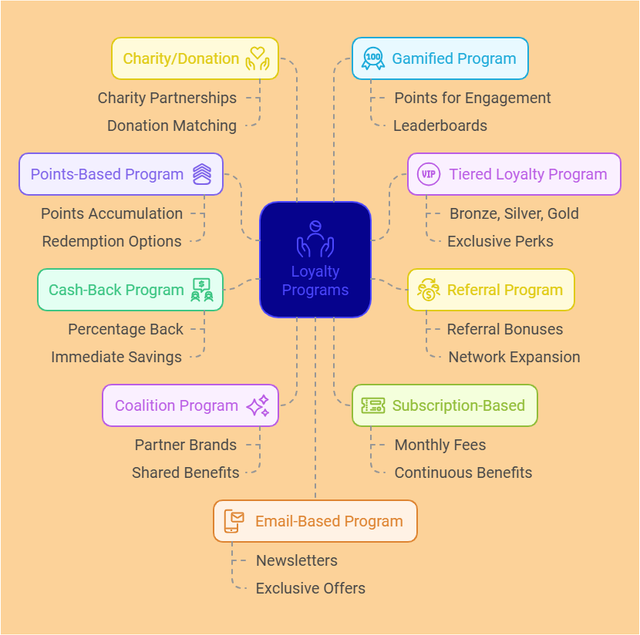
For example, you might opt for a points-based system to reward frequent purchases or a tiered program to encourage higher spending. Additionally, ensure the program is simple to use and clearly communicates benefits to participants.
Strategy #3: Exclusive Content and VIP Perks
Offering exclusive content and VIP perks enhances customer loyalty by making them feel valued and appreciated. These unique experiences strengthen emotional connections and drive repeat business.
Defining “VIP Perks”
VIP treatment includes unique perks like early product releases, special event invitations, and members-only discounts. These exclusives create a premium experience that makes customers feel truly special and strengthens their loyalty.
Emotional Connection
A Harvard Business Review study found that customers who feel emotionally connected to a brand are more likely to continue purchasing and recommending it.
Implementation Suggestions
- Private Online Communities: Create spaces like private Facebook groups to foster personal connections among loyal customers.
- Limited-Edition Products: Offer exclusive products to loyalty members to increase excitement and perceived value.
Strategy #4: Surprise & Delight Campaigns
By offering personal touches in marketing campaigns, you create an emotional connection that improves brand loyalty.
Examples of Surprise & Delight
- Handwritten Thank-You Notes: A simple, personal note can leave a lasting impression.
- Unexpected Discounts or Gifts: Small surprises like free product samples can create delight and enhance brand perception.
- Celebrating Milestones: Recognize events like anniversaries or birthdays to deepen emotional bonds.
Impact on Word-of-Mouth
Surprise and delight campaigns help you nurture your relationship with customers. When customers receive an expected gift or perk from a business, they share positive experiences and tell friends and family about you.
Tips for Execution
- Be Thoughtful & Genuine: Personalize gifts to show genuine appreciation.
- Leverage Customer Data: Use data to identify perfect moments for surprises, such as purchase anniversaries or significant interactions.
- Use Multiple Channels: Deliver surprises through various channels, such as email, SMS, in-app notifications, social media, and even direct mail.
- Track Your Results: Monitor key metrics like customer engagement, redemption rates, and social media
Strategy #5: Choosing the Right Advertising Channels
Choosing the right advertising channels (email, social media ads, search & display, or on-site promotions) ensures your loyalty program reaches the right audience effectively.
Email Marketing
- Triggered Emails: To keep customers engaged, send automated emails based on their actions, such as joining the program or earning points.
- Re-engagement Series: Encourage inactive members to return with exclusive deals or reminders of benefits.
- Linking Loyalty Accounts: Use dynamic content (e.g., point balances, upcoming rewards) to personalize emails.
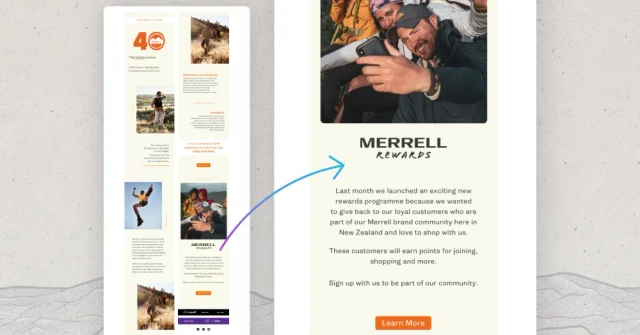
Social Media Ads
- Lookalike Audiences: Target users similar to your loyal customers to boost engagement and sign-ups.
- Showcase Rewards & Testimonials: Highlight customer stories and rewards to drive interest.
- Limited-Time Promotions: Create urgency with special offers to encourage immediate sign-ups.
Search & Display Advertising
- Branded Search Campaigns: Target loyalty-related keywords to capture users searching for your brand.
- Retargeting Ads: Remind site visitors who haven’t signed up or redeemed rewards to complete the process.
On-Site or In-App Promotions
- Pop-ups & Banner Ads: Use these to promote loyalty sign-ups and reward balances.
- Seamless Sign-up Process: Make it easy and intuitive for customers to join or redeem rewards, reducing friction and increasing conversions.
Strategy #6: Ongoing Communication & Proactive Support
Ongoing communication and proactive support are vital for the success of the loyalty program. Here’s how to excel at both:
Post-Purchase Engagement
- Tutorials & Educational Materials: Help customers maximize their purchases with useful guides or tips.
- Newsletters: Send relevant tips and content that align with their interests to keep your brand in their thoughts.
Proactive Customer Support
- Check-In on Satisfaction: A follow-up email or call ensures customers are happy and can prevent issues from growing.
- Anticipate Issues: Address potential problems early to prevent frustration and build trust.
Tools & Channels
- Email Drip Campaigns: Automated emails keep customers engaged with relevant updates and content.
- Chatbots: Quick automated responses to resolve common issues instantly.
- Social Media: Engage through timely responses to build loyalty and showcase your brand’s personality.
- Customer Success Calls: Personalized support for high-value or struggling customers helps reinforce loyalty.
Strategy #7: Referral Programs
Referral programs are an effective way to use loyal customers to attract new ones by rewarding them for sharing their positive experiences. Joy’s loyalty program includes a robust referral feature designed to help businesses expand their customer base through word-of-mouth marketing.

Image: Creating unique referral links with rewards such as discounts or points
This feature allows existing customers to share unique referral links with potential new customers, incentivizing both parties with rewards such as discounts or points. The process is straightforward: a customer shares their referral link, the referred individual clicks the link, enters their email to claim a reward, and completes a purchase. Upon this completion, both the referrer and referee receive their respective rewards.
Strategy #8: Gather Feedback & Act on It
Feedback reveals how well your loyalty program performs, highlighting pain points and areas for improvement. Addressing these insights fosters trust, loyalty, and long-term engagement.
How to Collect Feedback
- Surveys: Send loyalty program satisfaction or post-purchase surveys.
- Social media listening: Track mentions, reviews, and comments for real-time feedback.
- Customer support interactions: Use common issues or questions from customer service interactions.
Acting on Feedback
- Solve pain points like simplifying reward redemptions or adding options.
- Implement new features based on customer suggestions.
- Share updates with customers to show their voices matter and build stronger loyalty.
Key Components of Loyalty Program Marketing

Image: A strong loyalty program builds on key components to cater to different customer needs
A strong loyalty marketing program doesn’t just happen—it’s built on key elements that create value and connection for your customers. Here’s what makes it work:
- Program Design & Structure
Think clarity and ease of use. Your program’s design should be simple yet enticing. Tools like Shopify Joy Loyalty help craft visually appealing landing pages and customizable rewards that keep customers hooked. The landing page serves as a hub where customers can learn how the program works, explore ways to earn and redeem points and understand the benefits of participation. It includes visually appealing sections like a hero banner, clear explanations of program mechanics, detailed descriptions of earning and redeeming points, and an FAQ section to address common questions.
- Rewards and Incentives
The right rewards make all the difference. From exclusive discounts to free products or unique experiences, the goal is to offer perks that customers find exciting and worthwhile. Motivating incentives drives loyalty and repeat business.
- Communication and Engagement
Active communication keeps your program alive. You can announce updates, promotions, or new features through emails, SMS, social media, and loyalty program ads. Regular engagement ensures your program stays relevant and top-of-mind.
- Personalization & Data Analytics
Customers love it when you “get” them. Use data to tailor rewards and marketing campaigns, offering experiences that align with their preferences. Personal touches make customers feel appreciated and encourage long-term loyalty.
- Omnichannel Integration
Your customers and loyalty program should seamlessly transition between online and offline channels. Ensure it works smoothly across platforms, from in-store to mobile apps, to create a unified, hassle-free experience.
Case Studies: Real-World Examples of Loyalty Program Success
Here are three standout examples from retail, hospitality, and e-commerce that demonstrate the power of tailored loyalty program marketing strategies:
Retail Example: Sephora’s Beauty Insider Program

Sephora’s Beauty Insider program includes three tiers: Insider, VIB, and Rouge
Sephora’s Beauty Insider program is a tiered loyalty system that rewards customers with points for each purchase. It offers benefits such as discounts, exclusive products, and personalized experiences.
Challenges Before Implementing the Loyalty Program
Prior to launching Beauty Insider, Sephora faced the challenge of differentiating itself in a competitive beauty retail market. The company needed a strategy to foster customer loyalty, encourage repeat purchases, and stand out among competitors.
Additionally, understanding and meeting the evolving expectations of beauty consumers, who increasingly sought personalized and engaging shopping experiences, was a significant concern.
Implementation Strategy
Sephora introduced the Beauty Insider program in 2007 as a free, tiered loyalty system for customers in the U.S. and Canada. The program comprises three tiers: Insider, VIB (Very Important Beauty Insider), and Rouge, each offering distinct perks and incentives.
Members earn points with every purchase, while higher tiers offer faster point accumulation and exclusive perks. Sephora consistently elevates the program by adding features such as Beauty Insider Cash, gamified rewards, and exclusive events, ensuring it remains engaging and aligned with customer expectations.
Key Achievements
- In 2021, over 25 million members joined the loyalty program.
- By 2023, the Beauty Insider program expanded to over 34 million members, reflecting its widespread popularity and effectiveness in building customer loyalty.
- Members of the Beauty Insider program account for approximately 80% of Sephora’s transactions, underscoring the program’s pivotal role in driving sales and customer engagement.
- In 2023, Sephora’s performance contributed to a 25% year-over-year increase in LVMH’s selective retailing division, reaching €17.9 billion in revenue.
Recent Enhancements
- Gamification Elements: In September 2023, Sephora introduced gamified challenges within the Beauty Insider program, allowing members to earn extra points by engaging in activities such as trying out Sephora’s in-store shade-matching tool, Color iQ.
- Exclusive Events: Sephora hosted the Rouge Celebration Event to honor its loyal customers, offering exclusive access to product demonstrations, giveaways, and interactions with over 30 brands across multiple stores
Lessons Learned
- Regular program updates by adding gamification, exclusive events, and new redemption options keep the loyalty strategy fresh and aligned with customer values.
- Implement a tired structure to increase their spending and engage with the brand.
- Investing in mobile technology improves the shopping experience across all touchpoints, creating a seamless omnichannel journey.
- Offer experiential rewards, community engagement, and personalized rewards
Hospitality Example: Marriott Bonvoy
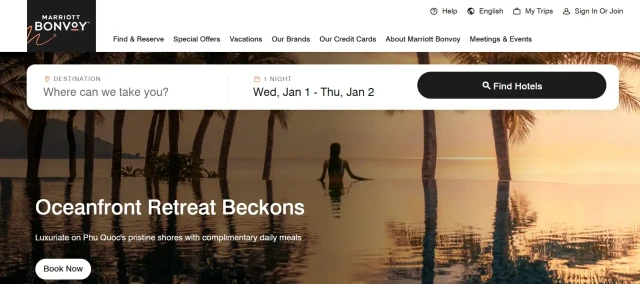
Marriott Bonvoy loyalty program provides customers with free breakfast, late checkout and lounge access
Challenges Before Implementing the Loyalty Program
Before launching Marriot Bonvoy, Marriott faced the challenge of integrating multiple loyalty programs after acquiring Starwood Hotels and Resorts. The company needed to unify its separate programs – Marriott Rewards, The Ritz-Carlton Rewards, and Starwood Preferred Guest (SPG)—into a single, cohesive platform. This process required balancing the preferences of a diverse customer base while ensuring a smooth transition for millions of existing members.
Another challenge was creating a program that could stand out in the competitive hospitality industry by offering tangible value and unique perks to attract and retain customers.
Implementation Strategy
Marriott Bonvoy is one of the best Marriott hotel company loyalty programs, allowing customers to earn and redeem points for staying at Bonvoy brands.
The loyalty program is free to use. All members booking the hotels will receive free Wi-fi and earn point rewards for free nights. If you often stay at Marriott properties, you can easily earn Marriott Bonvoy elite status for additional benefits such as late checkout, free breakfast, and lounge access.
Moreover, Marriott offers several co-branded personal credit cards and a business card for customers to earn even more Marriott points. Once you have accumulated Marriott points, you can redeem those points for free award nights.
Key Results
- Over 196 million members globally.
- Over 160 million members as of 2023.
- Increased customer loyalty, with members spending 20% more than non-members.
- Enhanced customer experience includes late checkouts, free breakfast, and lounge access.
What You Learn From
- Collaborating with airlines, credit card providers, and other partners simplifies the program’s appeal & reach.
- Flexibility and innovation show the importance of adaptability in meeting diverse customer needs.
- Customer-centric approach to foster long-term loyalty and advocacy.
E-commerce Example: Dollar Shave Club
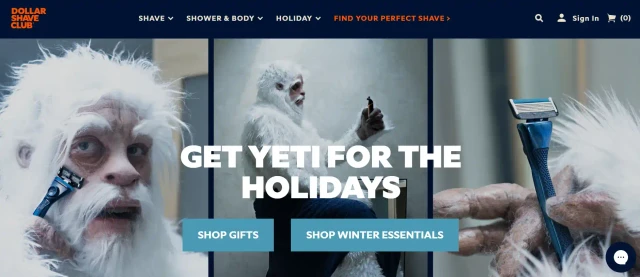
Dollar Shave Club launched a referral program offering rewards (e.g., free razors or discounts) for the referrer and the new customer.
Challenges Before Implementing the Loyalty Program
Prior to launching its loyalty initiatives, DSC faced the challenge of differentiating in a saturated grooming market dominated by established brands. They needed to build a loyal customer base and encourage word-of-mouth referrals to compete effectively.
Implementation Strategy
DSC introduced a referral program that encouraged existing members to invite friends and family. Members received a $5 credit for each successful referral, which could be applied to future purchases. The process was streamlined by providing unique referral links and pre-crafted, shareable messages for various platforms, making it easy for customers to participate.
Key Achievements
- Rapid Growth: The referral program contributed significantly to DSC’s rapid subscriber growth, with an estimated 50,000 customers referring others monthly.
- Customer Engagement: Achieved explosive growth from zero to over 3.2 million subscribers in just five years.
- Community Building: By positioning itself as a grooming club, DSC fostered a sense of community, encouraging members to share the experience with others.
Lessons Learned
- Simplicity and Timing: Implementing an easy-to-use referral system and prompting customers to participate immediately after purchase can enhance engagement.
- Leveraging Social Proof: Encouraging satisfied customers to refer others capitalizes on trust and personal recommendations, which are powerful drivers of new customer acquisition.
Common Pitfalls to Avoid in Loyalty Program Marketing
Even the most well-intentioned loyalty programs can falter if these common mistakes aren’t addressed. Here’s what to watch out for and how to avoid them:
Lack of a Clear Value Proposition
- Problem: Your loyalty program should offer compelling rewards and benefits that truly resonate with your target audience. If the value proposition isn’t clear or the rewards aren’t attractive, customers won’t see the point of joining or staying active.
- Solution: Clearly communicate the benefits of joining and emphasize the value customers will gain. Offer a variety of rewards that cater to different preferences and spending habits.
Poor Communication
- Problem: Failing to effectively communicate with your loyalty program members can lead to low engagement and missed opportunities. Customers might forget the program or be unaware of new offers and promotions.
- Solution: Communicate regularly through various channels, such as email, SMS, in-app notifications, and social media. Keep members informed about program updates, new rewards, and exclusive offers.
Complicated Program Structure
- Problem: A complex program with too many tiers, confusing points systems, or difficult redemption processes can discourage participation. Customers want a program that’s easy to understand and use.
- Solution: Keep your program simple. Make it easy for customers to earn points, track their progress, and redeem rewards.
Over Data Analysis
- Problem: Failing to track and analyze program data can prevent you from understanding its effectiveness and identifying areas for improvement.
- Solution: Regularly monitor key metrics like customer acquisition, retention, and redemption rates. Use data insights to optimize your program, identify trends, and make informed decisions.
Ending Words
Loyalty program marketing focuses on building strong, lasting connections with your customers. By leveraging strategies such as personalization, tiered rewards, and referral programs—and avoiding pitfalls like overly complex structures or insufficient promotion—you can craft a program that enhances customer retention and drives brand advocacy.
Loyalty Program Marketing: FAQs
What is a loyalty program in marketing?
A loyalty program in marketing is a system that rewards customers for returning to a brand and staying engaged. It offers perks like points, discounts, or exclusive deals to build long-term relationships. In addition, these programs let brands collect valuable insights, making it easier to personalize experiences and improve marketing efforts.
What is a loyalty marketing strategy?
A loyalty marketing strategy focuses on retaining customers by rewarding their loyalty and increasing their lifetime value. It involves creating a loyalty marketing program tailored to customer needs, using tools like pointed-systems, tiered rewards, and personalized offers.
How do you market a loyalty program effectively?
Effective marketing of loyalty programs involves leveraging multiple channels, such as email campaigns, social media ads, and on-site promotions. A strong loyalty program ad should highlight benefits like rewards, exclusive access, and ease of use.
What is the best example of a loyalty program?
One of the best examples of a loyalty program is Starbucks Rewards. It allows customers to earn stars for every purchase, which can be redeemed for free drinks, food items, or merchandise. With features like exclusive offers, birthday rewards, and the ability to order and pay through the app, Starbucks Rewards enhances convenience and fosters a deeper connection with its customers.
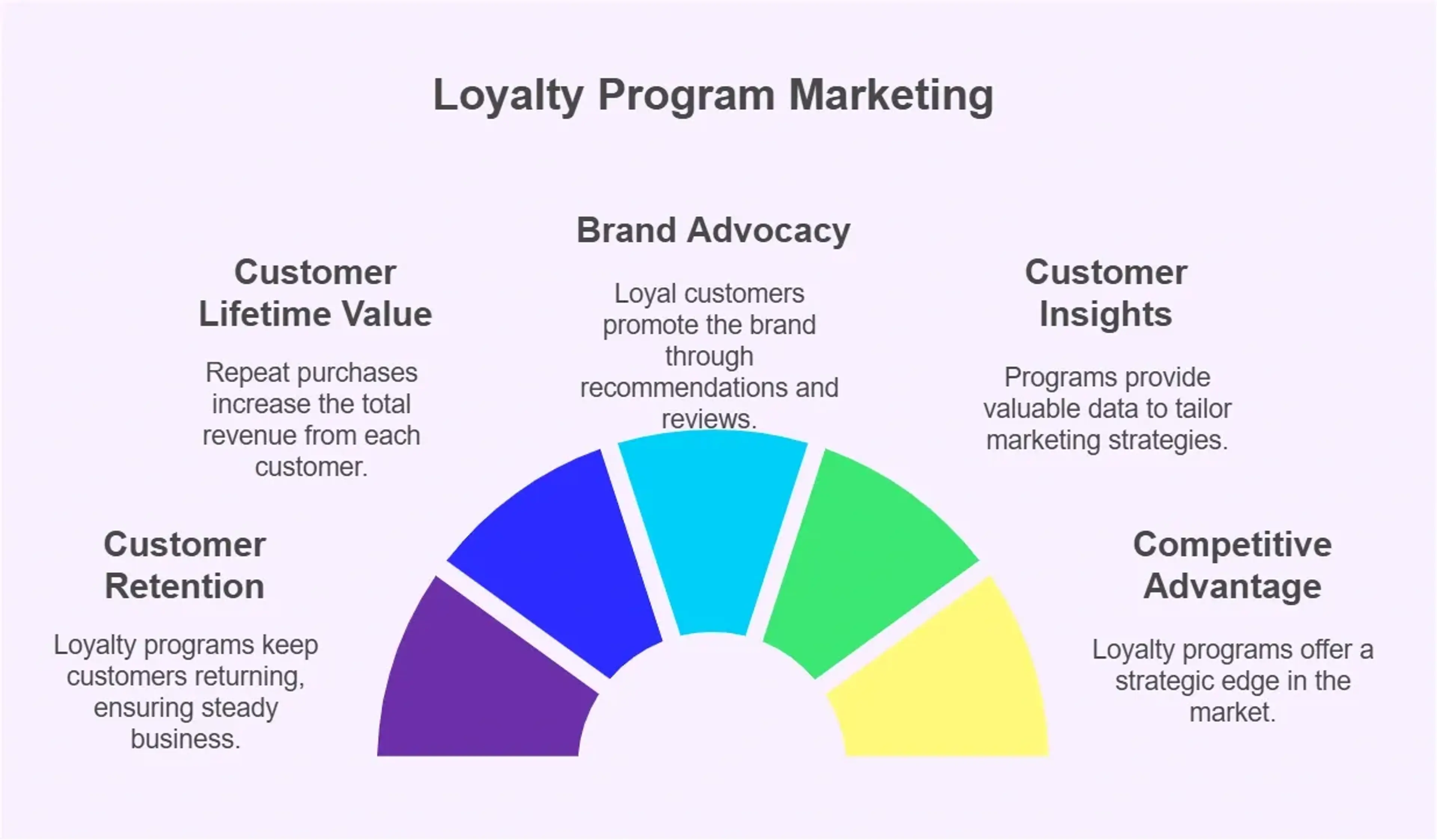

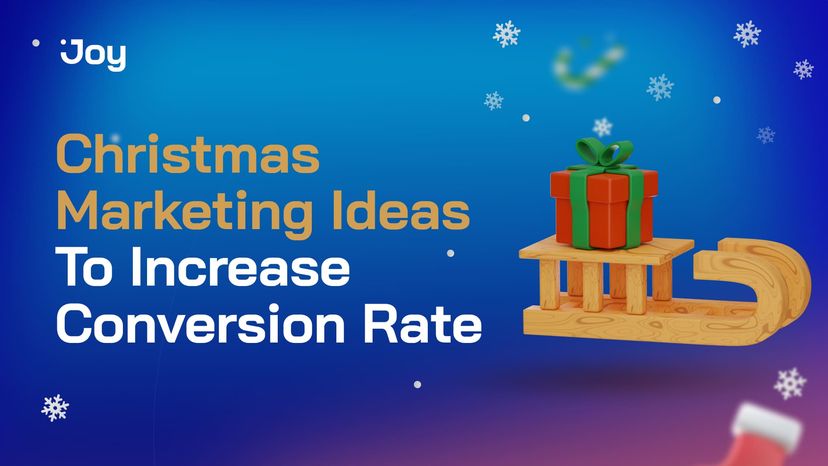

-a7e9a3.png?width=828&q=75&f=webp&auto=format)